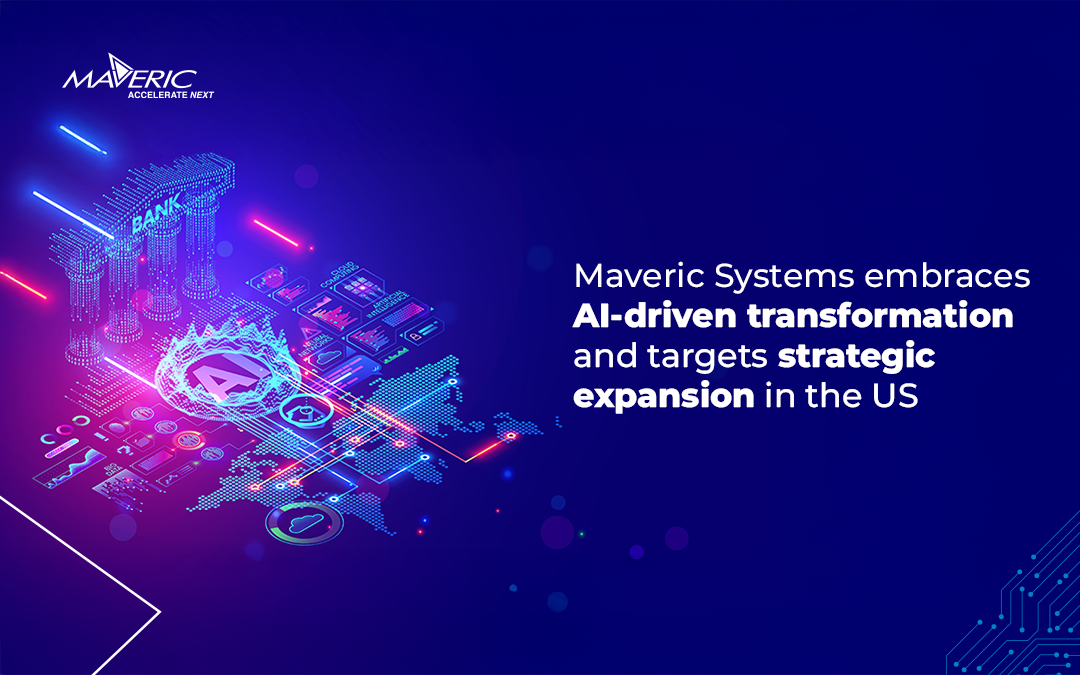By embracing a mindset of perpetual growth, individuals can proactively stay ahead of the curve in today’s rapidly evolving job market.
In the pursuit of professional growth and advancement, the journey often commences with introspection and self-assessment. Understanding one’s strengths and areas for development lays the groundwork for charting a path toward excellence. Whether one chooses to deepen expertise in their current field or explore new horizons, the commitment to continuous learning remains paramount.
To learn more about career development, upskilling, and other crucial aspects of the IT industry, we spoke with Kishan Sundar, Senior Vice President and Chief Technology Officer – Key Accounts. Have a look.
Can you tell us about your journey at Maveric Systems and what are the key responsibilities that come with your role as the Chief Technology Officer?
I have been in the industry for well over two decades, primarily focused on BFSI and Retail experience. Additionally, I have been with Maveric for around 9 years. I find working with technology, diverse groups of people, tackling various challenges, and building an enterprise culture to be very exciting. This aligns well with my passion.
During my tenure as the Head of the Digital Business unit, I was responsible for bringing leadership and business acumen to champion significant initiatives, including digital design thinking and strategic customer experience.
In my current role as the Chief Technology Officer, I am responsible for defining and implementing the company’s technology strategy and roadmap, which aligns with the business objectives of our customers’ needs and priorities.
I am responsible for providing leadership in creating engagement and impact through customized technology solutions, emerging technologies, and innovation for the key accounts.
As a technology leader, what advice would you give to individuals looking to advance their careers in the tech industry? How do you believe professionals can effectively upskill themselves to stay relevant in a rapidly evolving technological landscape?
The journey begins with introspection. One first needs to assess their strengths and the areas in which they want to excel. Based on that, define a path to stay ahead of the curve. You can either master the current skill or explore a new one. If you are continuing with your current focus, then you are enhancing your depth in that area and specializing in it. However, if you are moving to a new interest area or an emerging field, then you are diversifying your skill set. Whatever it is, one needs to adopt a mindset of continuous learning, which will help you stay sharp and ahead of the curve.
The second important aspect is to build a network of people and communities with similar areas of expertise and to become active on social media platforms to tap into a wider network. Keep an eye out for opportunities for collaboration and contribute to open-source projects. Build a strong professional network by connecting with peers, mentors, industry experts, and potential employers. Networking can provide opportunities for collaboration, mentorship, job referrals, and staying informed about industry trends and job openings.
The third crucial area that people should not ignore is the opportunity to hone their business acumen and develop soft skills such as communication, team management, leadership, and problem-solving.
What are some emerging trends in technology that you believe will significantly impact businesses in the near future?
The banking industry is undergoing a profound transformation driven by emerging technologies, and these trends are expected to have a significant impact on businesses in the near future.
Open banking initiatives are fostering innovation by allowing third-party developers to access financial data from banks through APIs. This trend enables businesses to integrate banking services into their applications, offering personalized financial solutions, improved access to capital, and streamlined financial management for customers. Banks are leveraging Artificial Intelligence (AI) and Machine Learning (ML) technologies to enhance customer experiences, automate processes, detect fraud, and optimize decision-making. Businesses can benefit from AI-powered chatbots, personalized financial advice, credit risk assessment, and fraud detection systems, improving efficiency and customer satisfaction.
Blockchain and Distributed Ledger Technology (DLT) are revolutionizing various banking processes, including cross-border payments, trade finance, identity verification, and smart contracts.
Biometric Authentication methods such as fingerprint, facial recognition, and voice recognition are enhancing security and convenience in banking transactions.
Cloud computing ensures robust security and compliance while enabling scalability and agility. Advanced encryption and access controls protect sensitive financial data, while the flexibility to scale resources efficiently supports fluctuating demands without compromising performance.
Immersive technologies, like chatbots with emotional intelligence and augmented reality (AR) and virtual reality (VR), present exciting opportunities for enhancing customer experiences and fraud prevention. Chatbots equipped with emotional connect capabilities can engage customers more effectively, providing personalized assistance and support while also identifying suspicious activities through sentiment analysis.
What strategies or approaches does Maveric Systems employ to encourage continuous learning and development among its employees?
Maveric has always prioritized talent development and has successfully implemented numerous initiatives, such as LIBA and ThinkNXT. Inspired by the success of these endeavours, we set out to integrate learning into our organizational culture, aspiring to become a true learning organization.
As a foundational step, we defined our vision—nurturing talents holistically with a growth mindset, our philosophy—embracing lifelong learning, and our core principles—centered on design thinking, a learner-centric approach, business focus, outcome orientation, and scalability.
From your perspective, how important is it for companies to embrace digital transformation, especially in the current business environment?
Digital transformation across industries is inevitable. Embracing innovation is no longer optional but essential. Discussions focus on areas where significant spending and research are occurring, particularly in the realm of digital transformation and immersive technologies like Augmented Reality and Virtual Reality. Efforts are directed towards enhancing customer experiences, regulatory compliance, data platforms, and overall process improvement. All these points highlight different dimensions of transformation, not limited to customer experience but also encompassing all touchpoints and non-touchpoints, emphasizing the collaborative effort between companies and their partners to support holistic digital transformations.
About The Author
 As the Chief Technology Officer of key Accounts, Kishan Sundar helms the technology strategy for key accounts. His leadership in creating engagement and impact through customized technology solutions, emerging technologies, and innovation for the key accounts will play a crucial role in accelerating Maveric’s revenue growth and fuelling its aspiration of becoming one of the top three Bank Tech companies by 2025.
As the Chief Technology Officer of key Accounts, Kishan Sundar helms the technology strategy for key accounts. His leadership in creating engagement and impact through customized technology solutions, emerging technologies, and innovation for the key accounts will play a crucial role in accelerating Maveric’s revenue growth and fuelling its aspiration of becoming one of the top three Bank Tech companies by 2025.
Originally Published in TECHGIG











